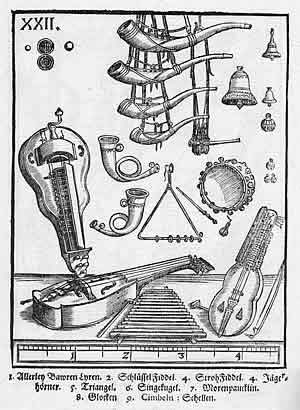Moraharpa on:
[Wikipedia]
[Google]
[Amazon]

 The moraharpa is a modern name for an early predecessor of the
The moraharpa is a modern name for an early predecessor of the

 The moraharpa is a modern name for an early predecessor of the
The moraharpa is a modern name for an early predecessor of the nyckelharpa
''Nyckelharpa'' (, roughly "keyed fiddle" in Swedish language, Swedish, , plural: ) is a "keyed" Bowed string instrument, bowed chordophone, primarily originating from Sweden in its modern form, but with its historical roots scattered across med ...
keyed fiddle; the primary example instrument dated 1526, was found in Mora, Sweden
Mora is a urban areas of Sweden, locality and the seat of Mora Municipality, Sweden, Mora Municipality in Dalarna County, Sweden, with 10,896 inhabitants in 2010.
History
There are signs of human activity in the surroundings of Mora dating from ...
. A number of modern reproductions of the original moraharpa have been made since the 1980s, and the name ''moraharpa'', in addition to referring to a single, specific instrument, has come to mean a type of nyckelharpa similar in design to the original moraharpa.
Museum example
The instrument on display at theZorn Collections
The Zorn Collections, or ''Zornsamlingarna'', is a Swedish state museum, located in Mora, dedicated to preserving the works by painter Anders Zorn.
Anders Zorn was one of Sweden's internationally best known artists. His fame abroad was founde ...
in the village of Mora
Mora may refer to:
People
* José Maria Mora (1847–1926), Cuban-American photographer, often credited as "Mora"
* Mora (singer) (born 1996), a Puerto Rican singer
* Mora (surname), a Spanish name (includes a list of people with the name)
Plac ...
in Dalarna
Dalarna (; ), also referred to by the English exonyms Dalecarlia and the Dales, is a (historical province) in central Sweden.
Dalarna adjoins Härjedalen, Hälsingland, Gästrikland, Västmanland and Värmland. It is also bordered by Nor ...
, Sweden
Sweden, formally the Kingdom of Sweden, is a Nordic countries, Nordic country located on the Scandinavian Peninsula in Northern Europe. It borders Norway to the west and north, and Finland to the east. At , Sweden is the largest Nordic count ...
—hence its name—has an inscription on the back of the apparent year "1526", - ''På baksidan av halsen finns inskuret "1526 " och ett par korslagda pilar. Detta instrument är förebild för den så kallade Moraharpa som idag tillhör den svenska folkmusikens instrumentarium. Repliker började tillverkas under 1980-talet.'' though it is unlikely to have been made that early. A Swedish scholar, Per-Ulf Allmo, has suggested that the instrument (and another in the same style) were likely built in Särna
Särna is a locality situated in Älvdalen Municipality, Dalarna County, Sweden with 719 inhabitants in 2010.
History
The two parishes ''Särna'' and ''Idre'' were originally part of Norway but were occupied by an expedition of Swedish peasants ...
, northern Dalarna
Dalarna (; ), also referred to by the English exonyms Dalecarlia and the Dales, is a (historical province) in central Sweden.
Dalarna adjoins Härjedalen, Hälsingland, Gästrikland, Västmanland and Värmland. It is also bordered by Nor ...
, more likely around 1680, with Praetorius Praetorius, Prätorius, Prætorius was the name of several musicians and scholars in Germany.
In 16th and 17th century Germany it became a fashion for educated people named "Schulze," "Schultheiß," or "Richter (disambiguation), Richter" (which mea ...
as inspiration, and with no close affinity with the nyckelharpa tradition of northern Uppland
Uppland is a historical province or ' on the eastern coast of Sweden, just north of Stockholm, the capital. It borders Södermanland, Västmanland and Gästrikland. It is also bounded by lake Mälaren and the Baltic Sea.
The name literally ...
, the stronghold of the instrument.
The soundbox
A sound box or sounding box (sometimes written soundbox) is an open chamber in the body of a musical instrument which modifies the sound of the instrument, and helps transfer that sound to the surrounding air. Objects respond more strongly to vibr ...
has an hourglass shape and looks very much like the illustration of a nyckelharpa in Praetorius's Syntagma Musicum
''Syntagma Musicum (1614-1620)'' is a musical treatise in three volumes by the German composer, organist, and music theorist Michael Praetorius. It was published in Wittenberg and Wolfenbüttel. It is one of the most commonly used research source ...
III of 1620 (where it is called ). It has a straight bridge
A bridge is a structure built to Span (engineering), span a physical obstacle (such as a body of water, valley, road, or railway) without blocking the path underneath. It is constructed for the purpose of providing passage over the obstacle, whi ...
(as opposed to the arched, cello
The violoncello ( , ), commonly abbreviated as cello ( ), is a middle pitched bowed (sometimes pizzicato, plucked and occasionally col legno, hit) string instrument of the violin family. Its four strings are usually intonation (music), tuned i ...
-like bridge of the nyckelharpa), one melody string, two drone strings, and one row of keys, while lacking the 10-12 underlying sympathetic strings
Sympathetic strings or resonance strings are auxiliary strings found on many Indian musical instruments, as well as some Western Baroque instruments and a variety of folk instruments.
They are typically not played directly by the performer (ex ...
of the nyckelharpa—which has three or four primary melody strings and features up to 25 wooden keys.
References
{{Swedish folk music Swedish musical instruments Nyckelharpor Early musical instruments